Kettlebell Squat Clean: Benefits, Muscles Worked, and More
Kettlebell squat cleans will train not only the muscles of the legs, but also the core, back and other upper body muscles.
With such a large number of muscles worked, including a kettlebell squat clean into your workout routine can help you build functional strength and power needed in many athletic activities.
What is a Kettlebell Squat Clean?
The kettlebell squat clean is a free weight compound exercise involving the lifter cleaning a kettlebell to shoulder-height before performing a full squat with the kettlebell still in place.
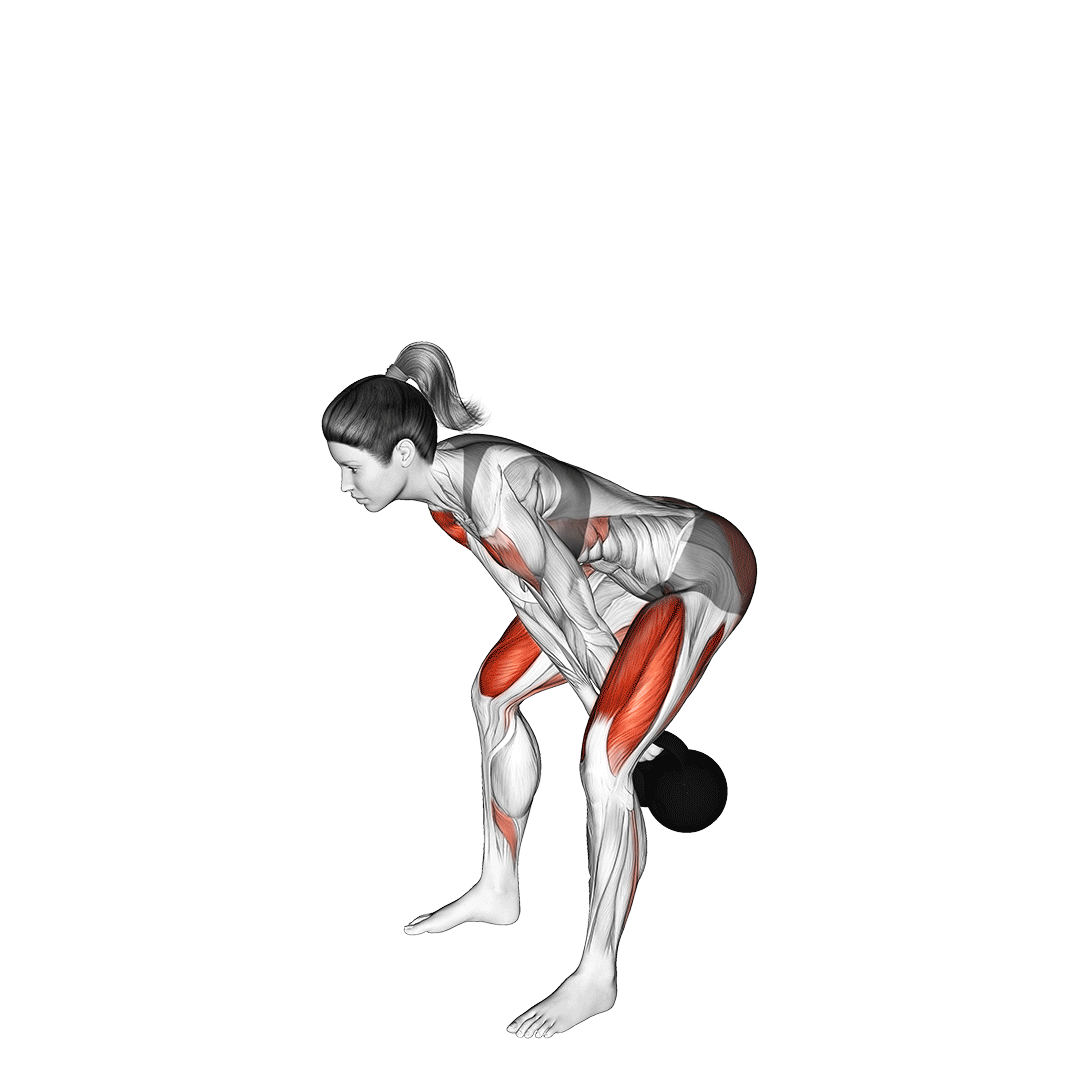
Because of how complex and intense the kettlebell squat clean can be, they are a favorite among athletes and other types of lifters seeking greater explosiveness throughout the body.
To program a kettlebell squat clean, either reduce total resistance in favor of moderate volume or perform low volume sets with a significant amount of weight. The former is more effective as a part of an athletic training drill, whereas the latter for power and strength training.
Is the Kettlebell Squat Clean Right for You?
Because of the technical knowledge needed to perform a clean correctly, the kettlebell squat clean is more appropriate for lifters of at least an intermediate level.
In addition, those with a history of issues relating to their shoulders or knees should also avoid the exercise without first consulting a medical professional.
If you’re at least an intermediate and don’t have any history of injury in the aforementioned areas, then the kettlebell squat clean is the perfect choice for building athletic skill, explosiveness and power throughout the entire body.
How to do a Kettlebell Squat Clean
To perform a repetition of the kettlebell squat clean, the lifter will first position themselves by setting their feet wider than shoulder-width apart, core braced, spine in a neutral curvature and toes pointing forwards. A kettlebell should be placed between the feet on the floor as well.
Now in the correct stance, the lifter will bend at the knees and push their hips backwards as they reach downwards to grasp the kettlebell in both hands.
Once the handle is firmly held in both hands, the lifter will explosively drive through their heels and push their pelvis forwards. This should cause them to rapidly squat upwards, translated force moving the kettlebell upwards.
As the knees and hips extend, the lifter will follow through with the momentum of the kettlebell and draw it up to chest-height, being careful not to round the upper back as they do so.
With the kettlebell now held in a goblet position around chest-level, the lifter will once again bend at the knees and push their pelvis back so as to perform a full depth squat. The kettlebell should continue to be held in this manner until the end of the repetition.
When the appropriate depth has been reached, the lifter drives through their heels and stands back up - where they will lower the kettlebell back between the legs and allow their arms to extend downwards.
At this point, the repetition is considered to be complete.
As the kettlebell is being held at chest level, the elbows should be pointed downwards and kept ahead of the torso. Avoid flaring them out to the sides or pointing them too far forwards.
Note that the one-handed variation of the kettlebell squat clean is performed in much the same way. Only, rather than gripping the kettlebell like a goblet, the bell is instead rested against the outside portion of the wrist and forearm. In addition, the feet are set slightly closer together at shoulder-width apart.
What Muscles do Kettlebell Squat Cleans Work?
Kettlebell squat cleans are a multi-joint exercise - which, in turn, means that multiple muscles are targeted to complete its movement pattern.
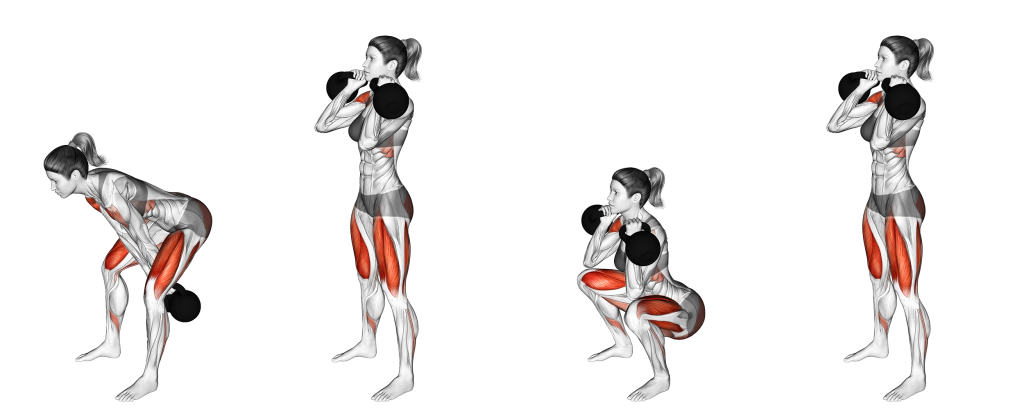
These muscles are divided according to the sort of contraction they exhibit, where static contraction marks a muscle as a “stabilizer” and dynamic contraction marks it as a “mover” or “mobilizer” muscle.
Generally, the mover or mobilizer muscles are those that will develop the most from an exercise, as dynamic contraction equates to greater hypertrophy and an overall more intense involvement.
Mover Muscles
During a repetition of kettlebell squat clean, the glutes, hamstrings and quadriceps are worked to the greatest degree.
In addition to these are the secondary mover muscles of the trapezius, anterior deltoids and the elbow flexor muscles.
Stabilizer Muscles
Apart from the aforementioned mover muscles, kettlebell squat cleans also recruit the abdominal muscles, obliques, erector spinae, deep lower back muscles and the remaining two deltoid heads in an isometric manner.
The elbow flexor muscles (brachialis, brachioradialis and biceps brachii), may also be used in the same capacity, depending on how the kettlebell handle is gripped.
What are the Benefits of Doing Kettlebell Squat Cleans?
Kettlebell squat cleans are a staple of many athletic training programs due to the benefits they offer - the majority of which have to do with improved overall performance and conditioning.
Excellent for Building Strength, Power and Explosiveness
The main advantage to kettlebell squat cleans lie in their capacity to develop force output, rate of force development and the speed to which the body can contract its muscles. These are otherwise referred to as strength, power and explosiveness.
Power and explosiveness are employed in practically all sports and forms of exercise. Sprinters, martial artists and Olympic weightlifters in particular will receive the most benefit from kettlebell squat cleans due to its greater emphasis on building explosiveness in the lower body.
To make the most out of this particular benefit, ensure that a proper tempo is followed with each repetition of the exercise. Clean the kettlebell explosively off the floor and drive through the heels with each squat performed.
Carryover to Front Squats and Other Clean Variations
Because of their similarity in stance, form and muscles used, the kettlebell squat clean can directly improve performance in exercises like the front squat, goblet squat or even the barbell clean.
Such improvement is achieved in a two-fold manner, where the muscles and nervous system become more accustomed to performing the specific motion (squats and cleans) - and secondly where the lifter consciously learns to better perform the movement itself.
Kettlebell squat cleans can be used to help improve the general clean movement pattern without creating the same fatigue or risk of injury that practicing with a barbell would present.
It can even be used as a supplementary exercise within the same workout as more intense variations of the clean. Doing so will allow for even greater volume and practice of the movement itself, something that Olympic weightlifters may wish to incorporate into their program.
Reinforces Proper Torso Orientation
Like other anterior loaded squat variations, the kettlebell squat clean requires the lifter to work harder in order to maintain a vertical torso orientation.
The erector spinae and core must be contracted to a greater degree and more attention is paid to keeping the chest upright due to the position of the kettlebell at the front of the torso.
Lifters with difficulty keeping their chest upright or preventing their upper back from rounding can both use low weight kettlebell squat cleans to reinforce proper torso orientation - even in seemingly unrelated exercises like the barbell hack squat or overhead squat.
Can be Incorporated Into Drills and Circuits
Because of its multi-purpose nature and the fact that it targets nearly every section of the body, the kettlebell squat clean is excellent as an inclusion into a variety of different training drills and circuits.
Drills or circuits aimed at promoting lower body power and explosiveness, upper body technique or power output over an extended period can all benefit from the inclusion of the kettlebell squat clean.
Aim for only a moderate amount of resistance when doing so, and place the exercise near the beginning of the drill or circuit so as to reduce form breakdown from fatigue.
Common Kettlebell Squat Clean Mistakes
In order to avoid injury and make the most out of the kettlebell squat clean, avoid the following common mistakes.
Rounding the Back
The most important error to avoid when performing kettlebell squat cleans is rounding of the back - be it of the upper or lower section.
Rounding at the upper back can lead to strain along the cervical section of the spine, increase pressure on the knees and make the movement more difficult as a whole.
Likewise, poor lower back curvature can strain the entirety of the spine and is a common source of injury in most heavy compound exercises.
To avoid making either mistake, ensure that the core is properly braced, the shoulders squared, the chest pushed out and the head facing forwards but not extended at the neck.
Stance Too Narrow
As is the case with a goblet squat, avoid placing the feet too close together during a kettlebell squat clean.
Doing so can cause the elbows to come into contact with the thighs as the squat portion is executed, greatly reducing range of motion and creating an overall less effective exercise.
Aim for a foot position slightly wider than shoulder-width apart with the toes pointing forwards.
Failing to Lower the Kettlebell at End of Repetition
In order to allow for the next repetition to involve a clean movement, the kettlebell must be lowered back to just above the ground with the arms extended at the front of the torso.
This means that once the squatting portion of the movement has been completed, the lifter should lower the kettlebell as they squat down once more in preparation for the next repetition. Avoid keeping the kettlebell in place, as this will simply turn the entire movement into a goblet squat instead.
Insufficient Range of Motion
Much like with any other exercise, the kettlebell squat clean should be performed to the fullest range of motion possible in order to train the muscles correctly.
Having an insufficient range of motion by failing to squat down low enough will cause the glutes, hamstrings and quadriceps to be underdeveloped or even create sticking points in other squat variation exercises.
Aim to always clean the kettlebell off the floor and up to chest height. Likewise, for the squatting portion, always begin in a standing position and descend to a depth where the hip crease is parallel to the tops of the knees at the least.
Divebombing the Squat Portion
Although the kettlebell squat clean is a primarily power-driven exercise that should be performed with rapid movements, avoid “divebombing” during the descending portion of the squat.
This can lead to unnecessarily intense shear force and pressure being placed on the knee joint and reduce how well the lower body’s muscles respond to the exercise.
For a more effective training stimulus that doesn’t forego the sort of tempo needed to build power and explosiveness, aim for a squat descent that lasts approximately one second before explosively rising out of maximum depth.
Holding Kettlebell Too Far Forwards
While not as dangerous an error as other entries in this article, avoid holding the kettlebell too far away from the chest. This can cause the upper body’s musculature to fatigue before the set is complete, and make the overall movement more difficult to balance as a whole.
Aim to keep the kettlebell held just a few inches in front of the chest, with the hands gripping the handle in a neutral orientation. Not only will doing so prevent the aforementioned issues, but it will also help keep upper spine neutrality and the correct elbow positioning.
Alternatives to the Kettlebell Squat Clean
If the kettlebell squat clean isn’t quite building the power you hope for, try the following alternatives out.
Kettlebell Swings
Kettlebell swings are a similarly power-driven kettlebell exercise that work much the same muscles as a kettlebell squat clean, only with even greater emphasis on building rate of force development.
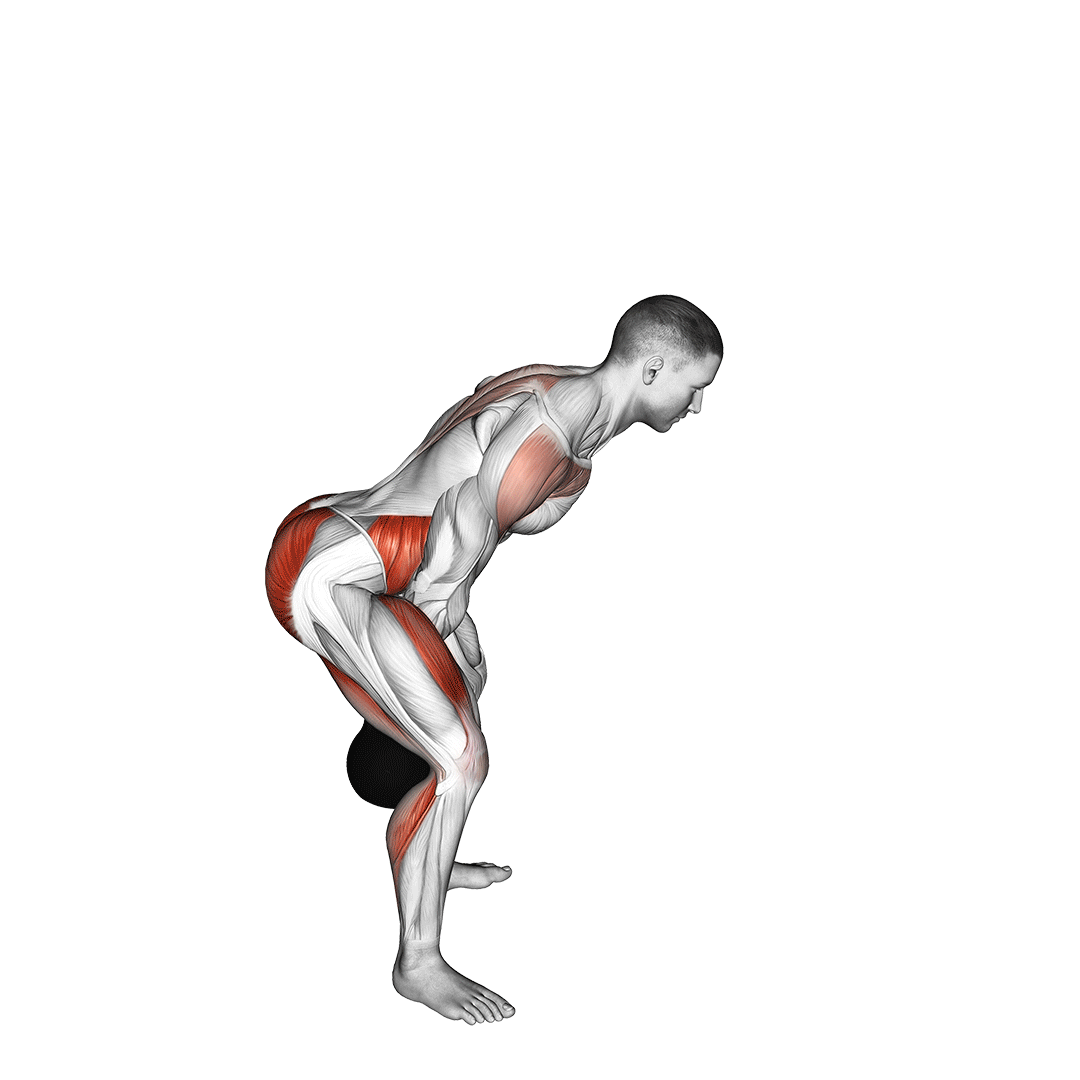
Rather than cleaning a kettlebell before performing a squat, kettlebell swings will involve the lifter lowering a kettlebell between their legs as they hinge at the hips. From this position, the lifter rapidly extends the hips and knees as they swing the kettlebell up to at least chest height.
Use kettlebell swings if the squat clean isn’t rapid and functional enough for your needs - or if you wish for less emphasis on the quadriceps and hamstrings.
Overhead Squats
Overhead squats are a more effective substitute to the kettlebell squat clean as far as hypertrophy and gross strength development are concerned.
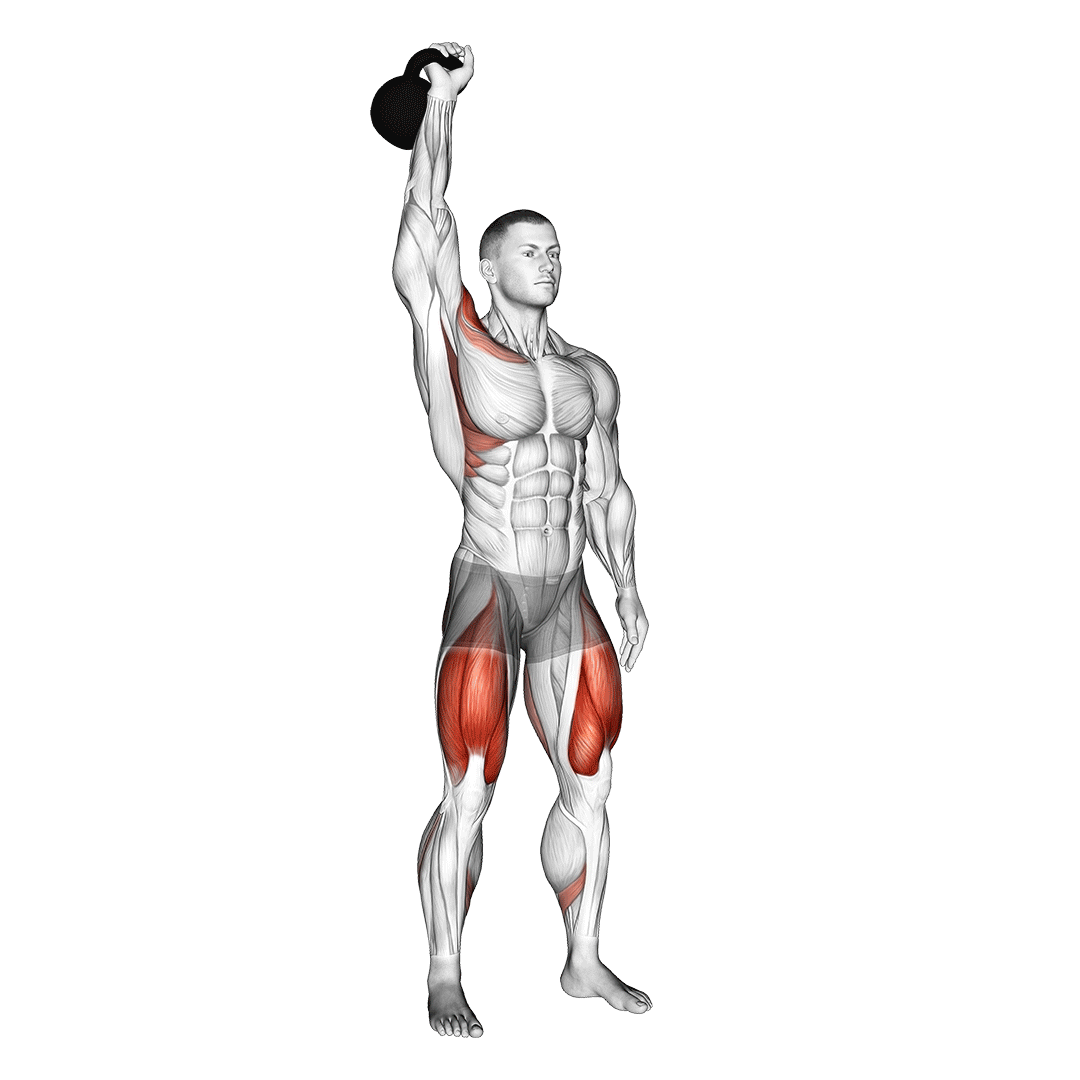
Although considerably slower, more strict and less power-driven than the latter exercise, overhead squats make up for it by emphasizing time under tension and a full range of motion.
As one can guess from its name, overhead squats are simply conventional squats performed with the weight raised overhead, creating a similar movement pattern to the squad clean but with less explosiveness and greater balance demands.
Squat Jumps
For a more lower body focused development of power and explosiveness, look no further than the classic squat jump.
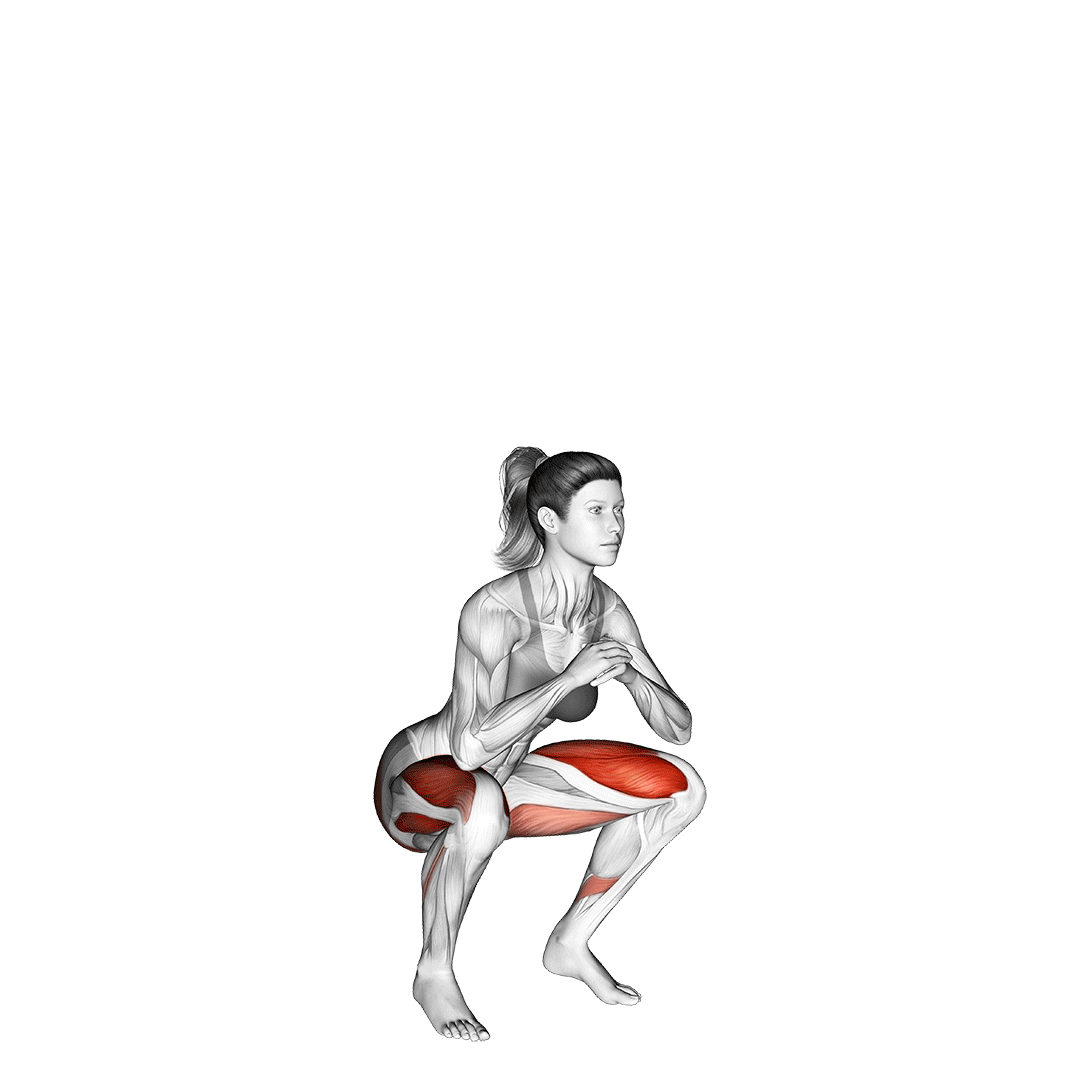
Squat jumps involve the lifter descending into a half squat before rapidly leaping into the air from the same position. This develops power output in the quadriceps, glutes and hamstrings in a manner that requires no equipment whatsoever.
The squat jump is the perfect substitute to the kettlebell squat clean if you wish to avoid straining the back, have no equipment available or need greater power and explosiveness in the lower body without necessarily involving the upper body.
Frequently Asked Questions (FAQ)
Is the Kettlebell Clean and Kettlebell Goblet Clean the Same?
For the most part, yes. Both the kettlebell goblet clean and kettlebell clean involve the same main movement pattern.
The sole difference lies in the manner that the kettlebell is gripped - goblet cleans invariably use both hands holding the handles in a neutral grip. A kettlebell clean can use this grip, but does not necessarily need to do so.
What is the Difference Between a Squat and a Clean Squat?
Clean squats are in fact two exercises - those being the conventional squat and the clean.
In comparison to regular squats, this adds a second phase to the movement pattern and involves muscle groups like the upper back, arms and shoulders in a manner that regular squats otherwise won’t.
Do Kettlebell Squat Cleans Build Muscle?
Yes, kettlebell squat cleans are excellent for building muscle to a certain extent.
However, due to the rapid tempo and focus on explosive movement, they are less effective at inducing muscular hypertrophy or building gross muscular strength.
Kettlebell squat cleans should be seen as less a muscle-building exercise and more of a power and technique development tool.
Final Thoughts
The kettlebell squat clean is a situational but nonetheless highly effective exercise for athletes and gymgoers alike.
However, keep in mind that several limitations inherent to the complexity of the movement (and the equipment used) are still present.
If seeking a heavy amount of weight, the nature of the kettlebell itself will likely limit how much you can load the exercise with. Likewise, though there is some overlap, the kettlebell squat clean is unlikely to improve your front rack technique as there is actually no front racking present.
If either of these issues are in the way of reaching your training goals, try the more traditional barbell clean or the conventional back squat.
References
1. Werner I, Szelenczy N, Wachholz F, Federolf P. How Do Movement Patterns in Weightlifting (Clean) Change When Using Lighter or Heavier Barbell Loads?-A Comparison of Two Principal Component Analysis-Based Approaches to Studying Technique. Front Psychol. 2021 Jan 25;11:606070. doi: 10.3389/fpsyg.2020.606070. PMID: 33569024; PMCID: PMC7868553.
2. Durck, Craig. SPEED DEVELOPMENT: Squat and power clean relationships to sprint training. National Strength and Conditioning Association Journal 8(6):p 40-41, December 1986.

